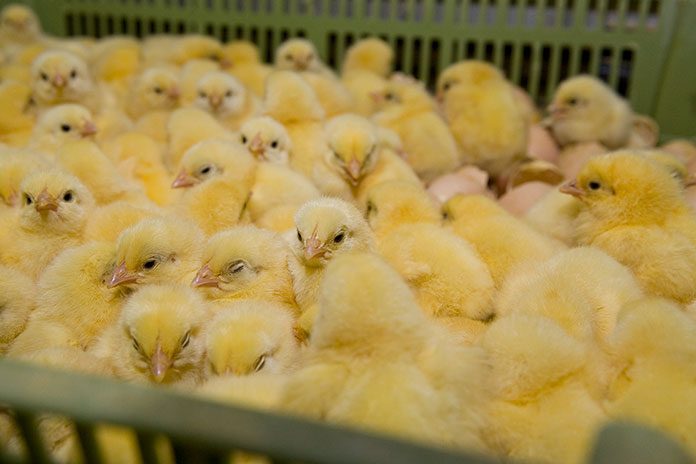
USPOULTRY and the USPOULTRY Foundation announce the completion of a funded research project at the U.S. National Poultry Research Center, Southeast Poultry Research Laboratory in Athens, Ga., in which researchers developed a method for making new types of vaccines.
The research is made possible in part by an endowing Foundation gift from Claxton Poultry and is part of the Association’s comprehensive research program encompassing all phases of poultry and egg production and processing. A summary of the completed project is shown below.
Project #F063: Generation of the bivalent vaccine against Newcastle disease (ND) and infectious laryngotracheitis (ILT)
Dr. Stephen Spatz, U.S. National Poultry Research Center, Southeast Poultry Research Laboratory, Athens, Ga.
In a recently completed research project, Dr. Stephen Spatz and colleagues created a new method for introducing genes from other viruses into infectious laryngotracheitis (ILT) virus for the purpose of creating vaccines that can protect against two diseases. This new method will allow ILT virus to be much more easily manipulated and provides a platform for future vaccine development. The first effort to use this platform will be to introduce genes from Newcastle disease virus into ILT virus to create a vaccine which protects against both diseases.
Infectious laryngotracheitis (ILT) and Newcastle disease (ND) are both economically important diseases of chickens. A single stable vaccine that could protect against both diseases would have significant value. ILT has become a more frequent disease over the past several years in many countries. Many cases occur in areas with a large number of unvaccinated broiler flocks in close proximity to vaccinated layers or breeders. Molecular virology assays indicate that commonly these cases represent instances of spread of live vaccines from vaccinated layers or breeders. Current ILT vaccines only reduce the risk of developing disease in exposed birds and do not prevent infection of vaccinated birds or shedding of ILT virus. On the other hand, cases of exotic Newcastle disease in the U.S. have not been reported since 2002, but poultry producers continue to administer ND vaccines to their flocks to provide protection against the mild forms of ND that exist in the US. In order to create a vaccine virus that protects against two diseases, genes from one virus must be transferred to the other virus, producing a hybrid virus that can induce protection against both diseases. In this project ILT virus was chosen as the host (vector) virus into which ND virus genes could be inserted.
The primary activity accomplished so far in this project was to successfully create a method to manipulate ILT virus so that genes from other viruses can be inserted into the ILT virus. To accomplish this, large DNA fragments of the ILT virus DNA were inserted (cloned) into E. coli bacteria and Saccharomyces cerevisiae yeast. This allowed the original virus to be reconstituted in the laboratory from the assembled DNA pieces. Reconstituted viruses were found to retain all of the characteristics of the parent virus in both the laboratory and in the chicken. This system allowed the identification of locations in the ILT virus DNA into which DNA from other viruses could be inserted. Currently, work is underway to stably insert two important genes of ND virus to create a vaccine to protect against ILT and ND.
The potential impact of the methodology invented during the course of this research will be of significant value to the poultry industry since it will allow quick manipulation of the ILT virus in order to generate vaccine candidates against several poultry pathogens. This method is much faster and easier than classical molecular virology methods and does not introduce any marker genes into the new vaccine, which will allow much easier licensing of vaccine candidates.
Information on other Association research may also be obtained by visiting the USPOULTRY website, www.uspoultry.org.















